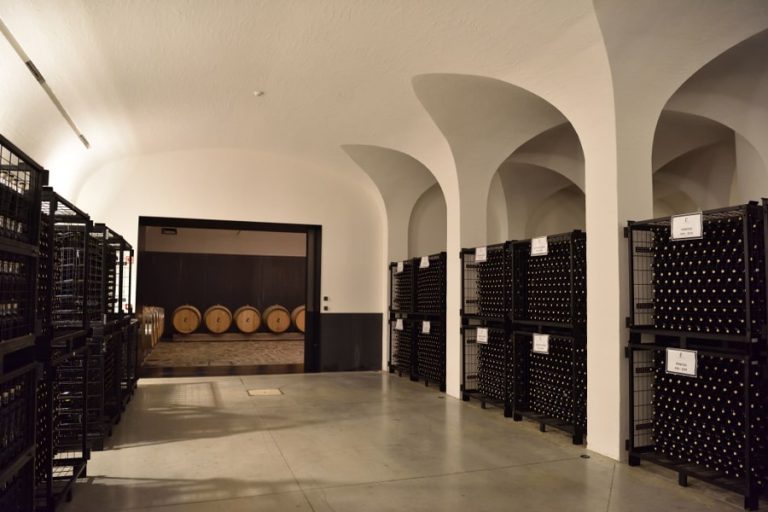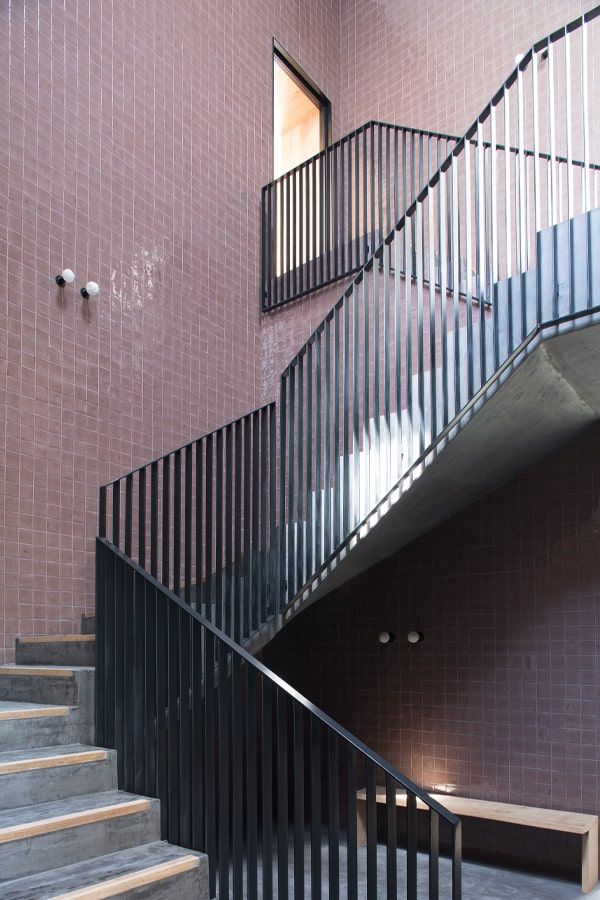Winery
An Architectural Winery
Pierre Yovanovitch brings his creative touch to the modern and sleek three-story building, providing breathtaking views of the Douro Valley.
Excavating 20 meters deep into the schist stone, the winery is a testament to innovative design. Embracing the notion that constraints fuel creativity, Yovanovitch crafted expansive volumes and a grand staircase adorned with traditional Portuguese tiles, serving as the backbone of the structure. The facade’s openings and panoramic windows act as authentic canvases, offering framed views of the river, vineyards, and terraced slopes of the Quinta.
The winery, dedicated to the production of Douro wines, seamlessly blends simplicity and functionality. As you enter, the grape reception area stands out with ground-level openings for berries entry, directed by gravity to the temperature-controlled fermentation tanks. The first level of the building, where art merges with technique, features a lounge and a terrace offering breathtaking views of the vineyards and landscape. The structure is complemented by a magnificent barrel room, a wine cellar, and a tasting room.
The contemporary furniture, exclusively designed for Quinta da Côrte, was crafted by local and French artisans under the architect’s guidance. This includes a high table with metal legs and a blue concrete top in the tasting room, solid wood sofas with handmade cushions, a pendant lamp shaped like a “grape” in black metal and blown glass, and entire tea tables made of volcanic stone, among other pieces that you can explore on-site.
Two wineries allied to the identity of a unique Terroir
A Traditional Port Wine Cellar
A cellar dedicated to the production of Port wine, where traditional architecture, original materials, and ancestral winemaking methods prevail (schist walls, granite lagars, century-old barrels, and casks).
The ancient tradition of treading grapes by foot in granite lagars remains a significant part of producing Port wines and some Douro wines at Quinta da Côrte. This traditional method helps preserve the authenticity and distinctive quality of our wines.
Foot Treading
The first phase of treading is called the ‘cut.’ It involves crushing the grapes to release the juice and pulp from the skins. During this initial phase, the treaders join in a tight line, advancing very slowly to the beat of the marker, shoulder to shoulder, until they cover the entire lagar, methodically ensuring that the grapes are fully crushed. After this phase, the “Liberdade” or the ‘freedom’ stage follows, often announced by the freedom song sung by the harvesters. The treaders work individually, moving freely around the lagar, ensuring that the grape skins are kept submerged. After a few hours, fermentation begins, and the heat and alcohol it produces start releasing color, tannins, and aromas from the skins, allowing them to be diluted into the fermenting wine.
This phase of the process is essential for producing high-quality Port wine. Foot treading, to this day, is considered by Quinta da Côrte the best way to achieve the extraction of unique aromas and flavors, preserving the authenticity and distinctive quality of its wines.



















